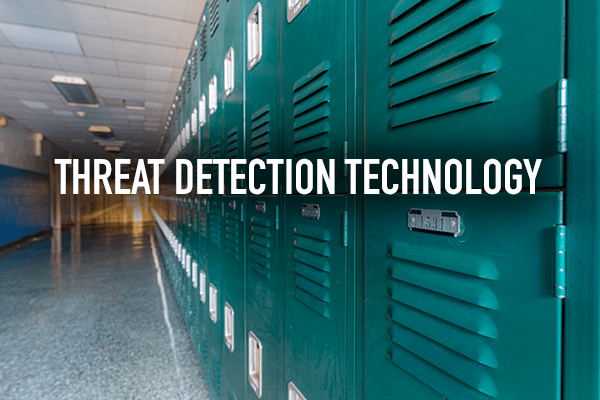
In the evolving landscape of security threats, access control technology has become a vital component in mitigating active shooter incidents. Organizations, schools, and businesses are integrating smart locks, biometric authentication, and AI-driven access management to enhance safety and response times during emergencies.
This article delves into the cutting-edge access control solutions that help prevent unauthorized entry, automate lockdown procedures, and provide real-time security management.
- Smart Lockdown & Automated Access Control
When an active threat is detected, automated lockdown systems can instantly restrict movement and secure entry points.
Cloud-Based Lockdown Systems
- Modern access control platforms like SALTO, Genetec, and PDK (ProdataKey) enable remote lockdown capabilities.
- Administrators or security personnel can lock all doors within a facility with a single command, preventing an intruder from moving freely.
- Mobile access control apps allow remote monitoring and override functions in case of emergency.
Gunshot Detection Integration
- Access control systems are now integrating with acoustic gunshot detection technologies like ShotSpotter and EAGL Technology.
- When a gunshot is detected, these systems automatically trigger a facility-wide lockdown, alerting emergency responders in real-time.
Automated Door Hardening
- AI-driven electromechanical door barricades instantly engage when a threat is detected, preventing forced entry.
- Systems like Nightlock and Bearacade provide rapid, automated door security solutions for classrooms and offices.
- Biometric Authentication & Facial Recognition
Traditional keycards and PIN codes are becoming obsolete in favor of biometric authentication, which enhances both security and convenience.
Facial Recognition Access Control
- AI-powered facial recognition systems, such as ZKTeco, Avigilon, and Suprema, identify individuals before granting access.
- Unauthorized individuals or flagged persons can be denied entry automatically, reducing internal threats.
- Liveness detection technology prevents spoofing attempts using photos or videos.
Multi-Factor Authentication (MFA) for Physical Access
- Secure access now involves multiple identity verification steps, such as:
- Fingerprint scanning combined with keycards.
- Facial recognition plus mobile authentication.
- Iris scanning paired with behavioral biometrics.
- Companies like HID Global and IDEMIA are leading the way in secure, AI-powered MFA for physical security.
- AI-Driven Access Analytics & Threat Prediction
AI and machine learning are transforming access control by predicting potential threats before they escalate.
Behavioral Access Monitoring
- AI-based systems analyze access logs to detect irregular patterns, such as:
- Unauthorized badge sharing or multiple failed entry attempts.
- Employees accessing restricted areas outside of scheduled hours.
- High-traffic door entries that indicate a security breach.
- Platforms like Genetec Security Center and Openpath use AI-powered threat detection algorithms to flag suspicious access behavior.
Geofencing & Smart Access Restrictions
- Access control solutions can now use geofencing technology to automatically restrict access based on a person’s location.
- In an emergency, doors can be configured to only open for verified security personnel while keeping others safely locked out.
- Mobile & Wearable Access Control Solutions
With the rise of mobile-based security, organizations are replacing traditional keycards with smartphone-based authentication.
Mobile Credentialing & NFC Access
- Solutions like HID Mobile Access and Proxy enable employees and security personnel to unlock doors using their smartphones.
- NFC and Bluetooth-based access allow hands-free entry, reducing the need for physical contact with security devices.
- Emergency override functions allow security teams to remotely grant or revoke access permissions instantly.
Wearable Security Badges
- IoT-enabled badges, such as those by SafeZone and CrisisGo, incorporate:
- Built-in panic buttons for immediate emergency alerts.
- Proximity-based lockdown triggers, automatically securing doors when a threat is detected nearby.
- Real-time tracking to locate personnel in emergency situations.
- Cloud-Based Security & Emergency Response Coordination
Modern access control systems seamlessly integrate with emergency response platforms to provide real-time security insights.
Emergency Access Management Platforms
- Solutions like 911inform and RapidSOS provide:
- Live building schematics to first responders.
- Door-by-door access override for law enforcement.
- Real-time occupant tracking to locate individuals in an emergency.
Remote Emergency Override & Facility Lockdown
- Cloud-based access control software enables remote lockdown activation from any device.
- AI-driven decision support tools suggest the best lockdown protocol based on real-time threat intelligence.
The Future of Access Control in Active Shooter Prevention
As threats evolve, access control technology is shifting toward AI-driven automation, biometrics, and real-time threat detection. Future innovations will focus on:
- AI-powered anomaly detection, predicting attacks before they happen.
- Blockchain-based identity verification for tamper-proof access control.
- Drones and robotics assisting in security and lockdown enforcement.
For businesses, schools, and organizations, investing in next-generation access control is critical to enhancing security and reducing response times in active shooter incidents.
Looking to upgrade your access control system?
BIITS LLC specializes in AI-powered access control, smart locks, and emergency response integrations. Contact us today to secure your facility with the latest in security automation.
